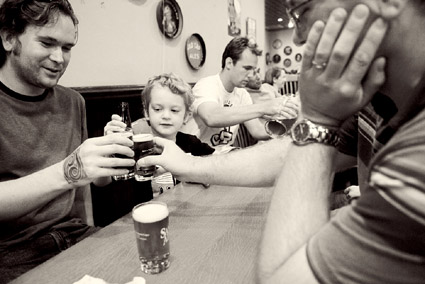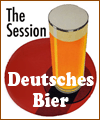 It has been quite some time since the last time I joined the beer-blogging Friday session. This month represents the 19th such session, and this month’s topic is Deutsches Bier.
It has been quite some time since the last time I joined the beer-blogging Friday session. This month represents the 19th such session, and this month’s topic is Deutsches Bier.
Interestingly enough, my last contribution to the session was during a month that happened to be about a German style of beer: Doppelbock. This month it isn’t about any particular style but about the contributions that the great nation of Deutschland has made to the world of beer. Instead of focusing on any particular contribution or beer style from this land, I’ve decided to author a history lesson of sorts – which has a myriad of tidbits about the most well-known and prominent styles (prominent according to the Beer Judge Certification Program Style Committee anyway).
Much of this content is probably common knowledge to most of the readers that follow the session. But it was good practice for my prose, and it was fun to do a little bit of research (I can’t claim that 100% of this post was all from the top of my head).
The Land of Lager
The origin of beer began with what today is commonly known as ale. But the cool climate in central Europe, where now stands the nation of Germany, led to the evolution of cold-tolerant strains of yeast. There are still ales produced in Germany, but they are vastly overwhelmed by the production of lager. These beers, Altbier and Kölsch, are found primarily in the north, particularly in Düsseldorf (Altbier) and in Cologne (Kölsch).
The cold climate in Germany led to the organisms known as lager yeast. The production of lager, with its crisp and clean flavors, was for a time unique to Germany and its surrounding neighbors. Further north in Europe, particularly in Belgium and the British Isles, ales continued (and still continue) to be the norm.
In Bavaria, brewing these lagers was not allowed during the summer months. The warm weather was not a suitable climate for production of these beers. As a result, brewers would often brew a special, stronger recipe in March, before the weather was too warm for brewing. The strength of the brew was so that it would better survive the summer months in storage. The beer would age, typically stored in cold caves (“lager” means “store” in German), during the summer months and then be consumed in the fall after the weather began to cool. This special lager, known as Märzen, is also commonly called Oktoberfestbier thanks to its being enjoyed in early fall during the Oktoberfest – a sixteen-day festival held in late September. This evening, I cracked open an Oktoberfestbier to accompany me as I write this: Victory Festbier. Yes, I know – this one is actually an American concoction. But I like to try new things, and this was the only Oktoberfest/Märzen beer I could find this evening that I had never tried before.
In the mid-19th century, advances in malting technology led to the production of light lagers – or helles biers – in Germany, and the popularity of these light lagers and their light, refreshing flavors grew quickly. Bohemia is the home of the first Pilsener beer: the most popular beer style in the world today (though the vast majority of “Pilsener” beers today are but watery shadows of authentic Pilseners). Bohemia is a region of central Europe that now constitutes the northwest of the Czech Republic – the southeastern neighbor of modern-day Germany. The northern-most strip of Bohemia even tried to unify with Germany after World War I. Egerland, the majority of whose citizens were German, declared itself independent on October 27th, 1918, to avoid becoming part of the newly-formed Czechoslovakia, which declared its independence the very next day. A few weeks later, on November 12th, the Republic of German Austria came into being – the day after Emperor Karl I relinquished control in his Abdication Proclamation. German Bohemia, which included Egerland, was a province of this new republic. But in late November, the Czechoslovak army invaded, and by December 27th, all major cities of German Bohemia had fallen to the occupying army. In 1919, the treaty of Versailles drew German Bohemia as definitively belonging to Czechoslovakia, and it remains a part of the Czech Republic today.
Before War World I and this dizzying sequence of events, brewers in Germany tried to copy this new and interesting Pilsener beer that came from Prague. Their subtly different brewing conditions (like different varieties of native hops and more sulfates present in drinking water) created a subtly different beer style. Current day German Pilseners are a little drier, a little lighter in body and color, and a little more bitter than their Bohemian counterparts. They also typically lack the distinctive floral aroma and flavor of Czech Saaz hops, instead favoring spicy German hop varieties like Hallertauer, Tettnanger, and Spalter.
Dunkles and Bock
Before the days of Pilsener and its light lager ilk were the days of dunkles – or dark – beers. These beers are still produced in Bavaria, represented by two major styles: Munich Dunkles and Schwarzbier. The former originated in – you guessed it – Munich, the latter in northern Bavaria (Franconia) and its adjacent neighbor-state to the north, Thüringen.
Another great dark lager that Germany gave to the world is Bock. Hailing from Einbeck in Lower Saxony (central/northern Germany), this beer was later adopted by monks in Munich who would later spew forth Bock’s bigger sibling: Doppelbock.
Let us all take a moment to give thanks and gratitude, for Bock is truly a treasure.
Weizenbier
In southern Germany, where brewing lager beer during the summer was not allowed, the thirsty folk were made refreshed by flagons of a delicious and unique summertime brew: weizenbier – also known as weissbier.
These brews are unique because the yeast responsible for their dazzling array of spicy and fruity flavors are like no others. They are suited to warmer temperatures, like ale yeast, but are generally hungrier (i.e. more attenuative) than other ale yeasts and produce a profile of esters and phenols that are eccentrically “weizen” in nature. In addition to special yeast strains, these beers also feature malted wheat as a main ingredient – between 50 and 70 percent of the grain bill, with malted barley filling in the remaining 30 to 50 percent.
The refreshing character of these wheat beers complements brews both light in color (Crystalweizen and Hefeweizen) and dark (Dunkelweizen). This year I’ve brewed one of each.
Brewed late winter, kegged early spring, my Dunkles Hefeweissbier is one of the best wheat beers I’ve ever made.

A summer treat for my wife, my German Hefeweizen was refreshing and tasty, but fermented a bit too warm to be perfect. The resulting beer is balanced a little more towards the banana-side than perfection, but it is still a nice, drinkable summer brew.
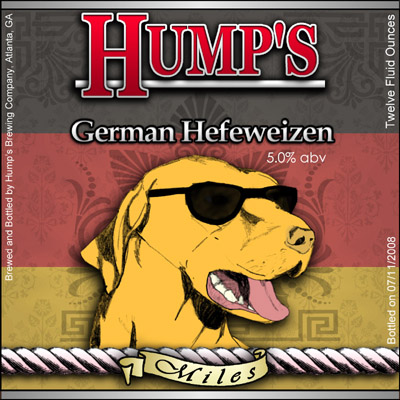
The weizen yeast character also complements brews that, unlike the refreshing beers mentioned so far, are quite heavy in gravity: Weizenbocks. Weizenbocks are essentially Dunkelweizens that are brewed to the strength of Doppelbocks. The increase in grain gives the beer bigger and richer flavors. The weizen yeast provide beautiful complexity.
The weizen yeast character is also a major contributor to the flavors of an all-barley beer style: Dampfbier. This style is not currently recognized by the BJCP, and examples of the style would have to be submitted to competitions as Specialty Beer. No authentic commerical example of this beer is available in the US currently (though there are some US brewers that have tried their hand at the style). I’m strongly tempted to brew a “pilot” batch (a mere 3 gallons) just to see how the lack of wheat distinguishes these beers from weizenbiers.
Rauchbier
Though this post is far from comprehensive when it comes to the many beer styles that originated in Germany, I can consider it complete only upon bringing up the marvels of Rauchbier.
I have had numerous smoked beers and thoroughly enjoy the flavors that smoke can add to a good beer. But none were as at once intense and delicious as Aecht Schlenkerla Rauchbier Urbock. The wonderfully rich, malty flavors of a Bock, laden with comforting smells of a smoldering campfire, were a sincere treat. This sweet and savory combination is reminiscent of other palate-pleasing inventions like smoked ham and bacon. Who doesn’t love that?!?
I have since designed my own Rauchbier recipe, in the vein of Aecht’s Urbock. But I chose to take it to the next level of extreme – a smoked Doppelbock. Doppelbocks are often named with an “ator” suffix. The origin of this practise isn’t entirely certain: was it to pay tribute to Paulaner Salvator (the original doppelbock), or was it to copy Paulaner and perhaps steal some market share with this dubious mimicry? In any event, given this traditional practise, what better name could be given to a smoked Doppelbock than Hump’s Baconator? (Unfortunately, no commercial beer could be so named without a legal agreement with Wendy’s, which has registered the word Baconator as a trademark with the USPTO)
A bottle label for Hump’s Baconator is still in the works. Stay tuned here to keep an eye out for it.
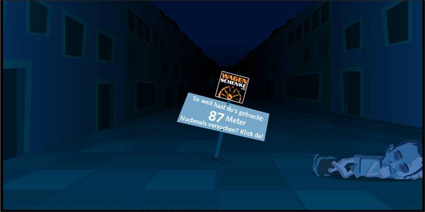
 The beers of Stone Brewing are finally available in Georgia, starting yesterday (9/22).
The beers of Stone Brewing are finally available in Georgia, starting yesterday (9/22).
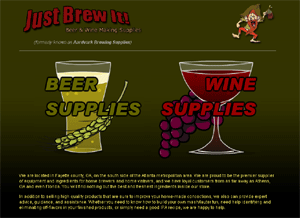
 It has been quite some time since the
It has been quite some time since the 

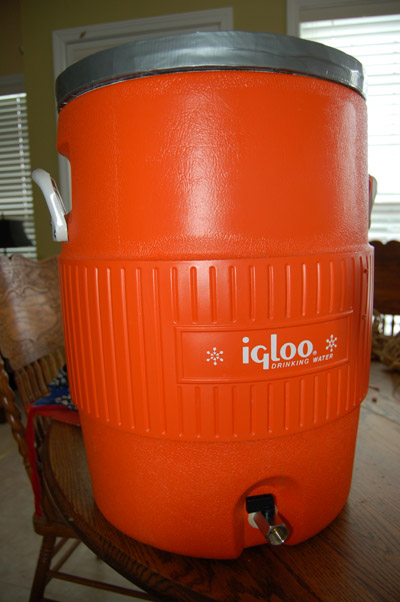
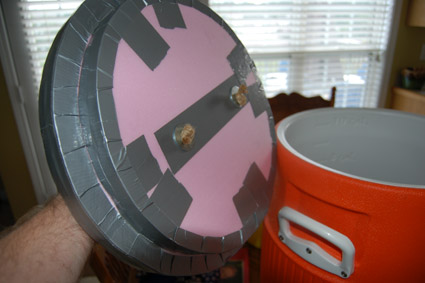



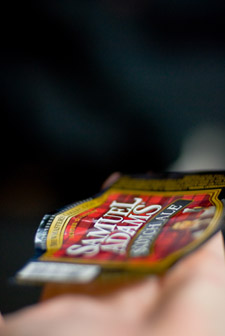 When we arrived, we were given special “tickets” that would be required to take the tour. The ticket was a label from a bottle of Samuel Adams Scotch Ale, as can be clearly seen from the pic.
When we arrived, we were given special “tickets” that would be required to take the tour. The ticket was a label from a bottle of Samuel Adams Scotch Ale, as can be clearly seen from the pic.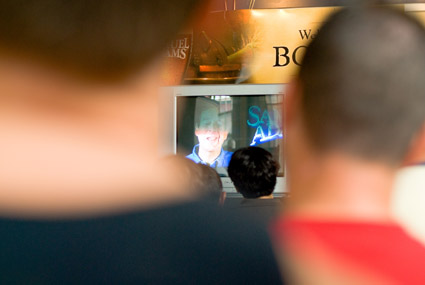
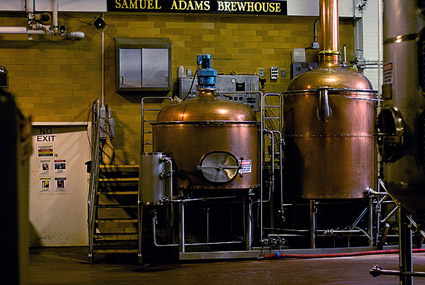

 To the left is the guide. If you are ever in Boston and see this guy (taking the tour at the Sam Adams Brewhouse or if you see him randomly on the street) be sure to give him a hard time about spilling beer on that poor girl!That poor girl happened to be none other than my wonderful spouse, Malin.
To the left is the guide. If you are ever in Boston and see this guy (taking the tour at the Sam Adams Brewhouse or if you see him randomly on the street) be sure to give him a hard time about spilling beer on that poor girl!That poor girl happened to be none other than my wonderful spouse, Malin.